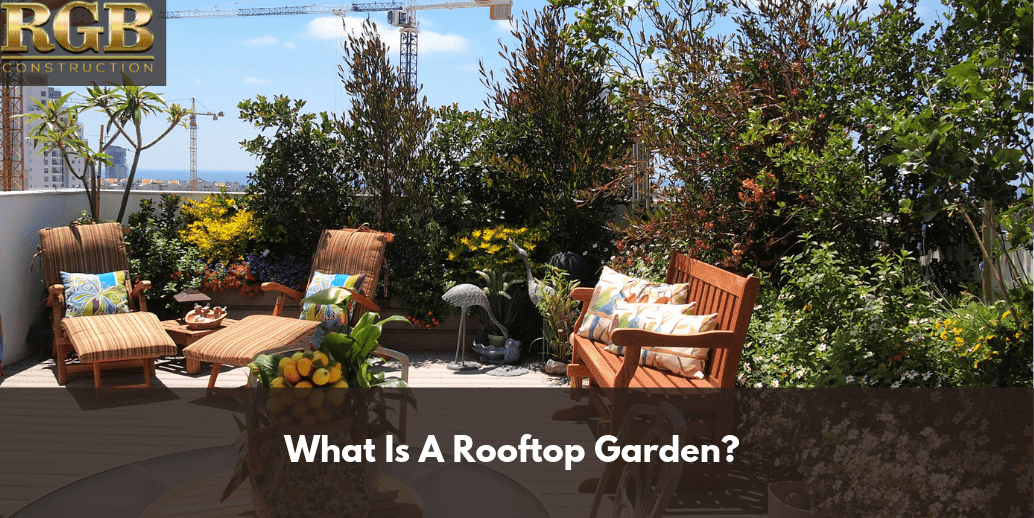The concept of a rooftop garden is nothing new as ancient civilizations utilized raised terraces to grow trees, shrubs, and plants during the reigns of Roman, Egyptian and Mesopotamian empires. Most seasoned gardeners today think of their backyard or plot of land in the wide open spaces as their garden patches, but other determined gardeners and environmentalists know there are alternatives and that’s where rooftop gardens come into play.
What is a Rooftop Garden
In simple terms, a rooftop garden is one that is cultivated and grown on the roof of a building or other structures. Rooftop gardening usually happens in areas where space or property is limited, or totally lacking. Those reasons are why rooftop farming usually occurs in large cities where the property is scarce and real estate is high. Rooftop gardening can be categorized in two different ways:
– Roof Garden
A roof garden usually accommodates containers with plants that can cover part or most of a roof and the plants may be used on buildings that are for recreational or commercial use. For example, a vegan or organic restaurant would be considered s commercial facility.
– Green Roof
A green roof actually means that plantings are grown right on a roof with a water-resistant membrane underneath them. There are two green roof types that include intensive and extensive. An intensive green roof contains layers of thick soil that can handle larger plants and even trees, while an extensive one contains thinner layers of soil that accommodate smaller plants.
Reasons for Rooftop Gardening
Rooftop gardening occurs for various reasons, one being the aesthetics involved with a lush and green rooftop that announces to a community its decorative and environmental qualities as well as commercial and personal aspects. The more traditional reasoning behind rooftop gardening is simply to grow fruit, vegetables and other plants for consumption or other related uses. With the different outlooks and reasons behind rooftop gardening, what are its benefits anyway?
Benefits of a Rooftop Garden
– Interaction with nature
A rooftop garden allows those who would not have interaction with nature to do so, particularly for people in large cities who have limited to no contact with natural elements or any type of green space. That kind of interaction is healthy and helps support general happiness and provides stress relief as well.
– Diminished Pollution
Rooftop gardening diminishes pollution levels as it helps increase the quality of air and water. A rooftop garden can reduce and filter particles and gases in the air through photosynthesis as well as through deposition in the areas of rooftop growth. When there are numerous rooftop gardens in a city, their presence may also help in the reduction of dust in the air and may diminish smog that contributes to unfavorable emissions.
– Building Waste
A rooftop garden can lessen building waste and can increase the effectiveness and longevity of the materials and technological aspects used in a structure. The actual roof membrane used below the soil layer in a green roof can be of value in reducing building waste, and the heating, air conditioning and ventilation utilized in a building can also be reduced.
– Noise Reduction
Rooftop gardens provide insulation from noise as the soil and plants act as buffers. They can absorb, divert, or reflect sound and create a natural reduction in noise to a building. Rooftop gardens can also decrease overall noise in busy urban areas and other noise producing spots in a city.
– Heat Effects
One of the more impressive aspects of a rooftop garden is its effect on the heat of an urban area (UHI-Urban Heat Island). Increased levels of heat are produced through large areas of concrete in urban locations. The concrete absorbs the heat and creates heated areas. These areas, or heat islands, can make cities very warm during the spring and summer seasons, which leads to extended use of cooling systems. When rooftop gardens are in place, the urban heat effect is lessened. With evaporation occurring in these garden spots, large expanses of green can cool urban areas and reduce the urban island heat effect.
– Rain Retention
Rooftop gardens take full advantage of rainwater and use it immediately. Any excess rainwater is retained and stored for later use. The evaporation process returns the water to the air. The plantings on a rooftop garden retain the rainwater, but they also act as filters for any building runoff, which lowers the chances of flooding below.
– Energy Use
A rooftop garden is a great way to save energy. With the added insulation, a rooftop can retain heat in the cold and reduce temperatures in the heat. These effects lead to lower use of air conditioning and heat, which in turn leads to energy conservation and lower utility bills.
– Agriculture Incentives
Rooftop areas are the right spots for the development of green roofs for agricultural mini-farms. The production of fresh fruits, vegetables, and other edible plants is a great incentive for natural food harvesting in urban areas.
Rooftop gardens can be a fun and productive way to utilize buildings or upper-level home spaces, and the advantages and benefits are many. If you are contemplating a rooftop garden of your own, complete the online contact form, and a representative will get back to you with the information you need to start your own green oasis.

